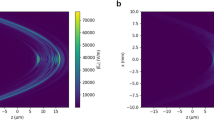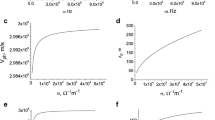Abstract
HITHERTO the potential difference required to produce a discharge through a well-exhausted vacuum tube has been considered to vary only with the pressure of the gas. In the course, however, of some experiments with an X-ray bulb (where the pressure could be regulated by a Gaede pump and measured by a McLeod gauge) a continuous discharge was maintained for about eight hours on several consecutive days, and I have observed a gradual hardening in spite of the maintenance of a comparatively high pressure. Further experiments carried out in this direction have revealed a remarkable effect which takes place in an X-ray bulb or, more generally, in any vacuum tube after a sufficiently long and continuous run—an effect similar to the polarisation of an electrolytic cell. This is, that after the discharge has been kept running for a sufficiently long time through a tube (inside which the pressure is kept nearly constant) a time arrives when the current flowing through the tube begins to decrease, and finally ceases altogether. To continue the discharge it is then necessary to increase either the potential difference applied to the electrodes or the pressure inside the tube. By repeating this operation several times I could ultimately reach a stage where a potential difference of more than 50,000 volts was not sufficient to produce a discharge in the bulb, although the pressure was as high as 0.060 mm., whereas under ordinary conditions in the same bulb a much smaller potential difference was sufficient to produce a discharge under a pressure of the order of 0.001 mm. After the discharge has been stopped the bulb gradually returns to its normal condition, but afterwards a comparatively short run is sufficient to bring the bulb back to the state of polarisation.
This is a preview of subscription content, access via your institution
Access options
Subscribe to this journal
Receive 51 print issues and online access
$199.00 per year
only $3.90 per issue
Buy this article
- Purchase on Springer Link
- Instant access to full article PDF
Prices may be subject to local taxes which are calculated during checkout
Similar content being viewed by others
Author information
Authors and Affiliations
Rights and permissions
About this article
Cite this article
RATNER, S. Polarisation Phenomena in an X-ray Bulb. Nature 107, 522–523 (1921). https://doi.org/10.1038/107522c0
Issue Date:
DOI: https://doi.org/10.1038/107522c0
Comments
By submitting a comment you agree to abide by our Terms and Community Guidelines. If you find something abusive or that does not comply with our terms or guidelines please flag it as inappropriate.



